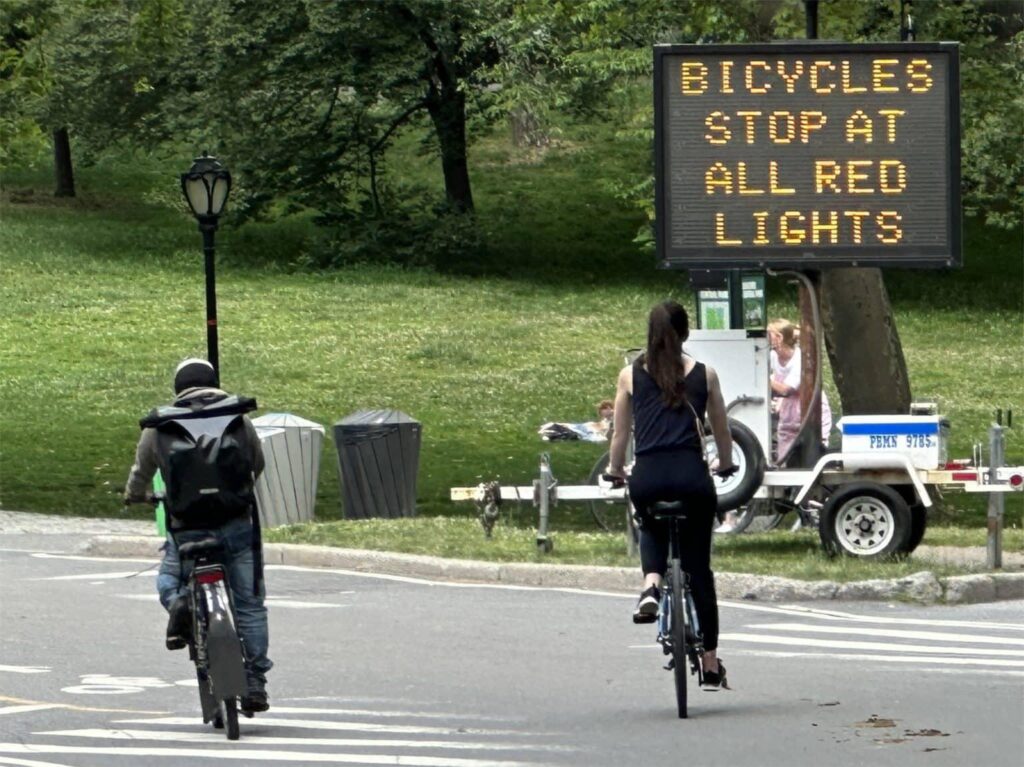New York City’s Approach to Managing E-Bikes and Vehicle Traffic in Urban Parks
Ensuring Safe Coexistence Between E-Bikes and Pedestrians in City Green Spaces
New York City is navigating a multifaceted issue as it seeks to integrate the rising popularity of electric bicycles within its park systems while safeguarding the peaceful environment cherished by pedestrians. The surge in e-bike usage, characterized by faster speeds and increased volume, has raised safety concerns among residents, urban planners, and park officials. To address these challenges, the city is exploring a combination of infrastructure adjustments and regulatory measures designed to harmonize the needs of riders and walkers alike.
Among the proposed initiatives are:
- Installing prominent signage to clearly separate e-bike routes from pedestrian paths
- Setting and enforcing speed caps between 10 and 15 miles per hour for e-bikes in shared park areas
- Boosting patrol presence to ensure adherence to rules and promote awareness of shared space etiquette
- Implementing time-based restrictions to limit e-bike access during peak pedestrian periods
| Initiative | Objective | Projected Outcome |
|---|---|---|
| Dedicated E-Bike Lanes | Separate e-bike traffic from foot traffic | Anticipated 30% reduction in collisions |
| Speed Regulations | Limit e-bike speeds in mixed-use zones | Decrease in accident severity |
| Peak Hour Access Limits | Restrict e-bike use during busiest times | Improved pedestrian safety and comfort |
Overcoming the Complexities of Shared Pathway Traffic Management
Managing the flow of diverse users—including e-bike riders, traditional cyclists, pedestrians, and occasional motor vehicles—on shared park pathways presents significant logistical and safety challenges. The disparity in speeds and maneuverability often leads to unpredictable encounters, especially in congested areas where pedestrians expect a leisurely pace. This dynamic complicates enforcement and highlights the necessity for well-defined zones and comprehensive user education on right-of-way and safe conduct.
Compounding these issues are the physical constraints of many park trails, which were originally designed solely for foot traffic. To address these limitations, the city is considering a suite of measures such as:
- Clearly marked, dedicated lanes for e-bikes
- Enforced speed limits supported by signage and active monitoring
- Time-specific access rules to separate different user groups during peak periods
- Expanded public education campaigns emphasizing shared pathway safety
The table below contrasts current conditions with proposed improvements:
| Aspect | Current Situation | Proposed Enhancement |
|---|---|---|
| Pathway Width | Narrow, shared by all users | Widened lanes or separate tracks for different modes |
| Speed Enforcement | Minimal signage and sporadic enforcement | Strict speed limits with active patrols |
| Traffic Composition | Mixed and often overlapping | Scheduled access windows for distinct user groups |
| Safety Awareness | Limited outreach efforts | Robust public education and clear park signage |
Assessing the Environmental Consequences of Growing E-Bike Popularity
The increasing adoption of e-bikes in New York City’s parks introduces a nuanced environmental impact profile. E-bikes offer a zero-emission alternative to gasoline-powered vehicles, contributing to the city’s climate goals by reducing direct carbon emissions. However, the overall ecological footprint depends on factors such as the environmental costs of battery manufacturing and the energy sources powering e-bike charging stations.
For instance, the extraction of lithium and cobalt—key components in e-bike batteries—raises sustainability concerns due to mining practices and resource depletion. Additionally, if the electricity used for charging is derived from fossil fuels, the net environmental benefit diminishes. Beyond emissions, increased e-bike traffic may accelerate trail wear and disturb local wildlife habitats, necessitating careful management to mitigate ecological degradation.
Environmental impacts can be summarized as follows:
- Advantages: Elimination of tailpipe emissions, reduced noise pollution, and decreased congestion in sensitive park areas.
- Drawbacks: Environmental costs of battery production, energy consumption during charging, and potential harm to park ecosystems.
| Impact Category | Effect | Potential Mitigation |
|---|---|---|
| Emissions | Reduction through zero tailpipe output | High, with increased use of renewable energy |
| Battery Manufacturing | Environmental footprint from resource extraction | Moderate, via recycling programs and technological innovation |
| Wildlife and Habitat | Increased trail erosion and habitat disruption | Moderate, through traffic regulation and trail maintenance |
Strategic Policy Proposals to Align E-Bike and Vehicle Regulations
To alleviate tensions between e-bike users and motor vehicle operators within New York City parks, policymakers must craft clear, consistent regulations that enhance safety without hindering mobility. Establishing dedicated lanes exclusively for e-bikes, separate from cars and conventional bicycles, is a critical step toward minimizing accidents and confusion. Complementary measures such as uniform speed limits tailored to e-bikes and mandatory helmet requirements will further protect riders.
Effective enforcement should combine technological solutions—like surveillance cameras and speed sensors—with increased presence of park rangers who can both monitor compliance and educate the public. Equally important is fostering ongoing dialogue among city agencies, community members, and transportation advocates to ensure policies remain responsive to evolving needs and technologies.
Key recommendations include:
- Dedicated E-Bike Infrastructure: Confine e-bikes to specific pathways to reduce conflict.
- Standardized Speed Limits: Implement citywide caps for e-bike speeds in shared environments.
- Mandatory Safety Equipment: Enforce helmet use and visibility gear for all riders.
- Stakeholder Engagement: Maintain regular consultations with park users and advocacy groups.
- Technological Enforcement Tools: Utilize cameras and sensors to monitor rule adherence.
| Policy Element | Advantages | Implementation Challenges |
|---|---|---|
| Dedicated Infrastructure | Reduces accidents and clarifies traffic flow | Requires significant funding and redesign of existing paths |
| Speed Regulation | Improves safety and reduces collision severity | Challenges in enforcement and rider compliance |
| Helmet Mandate | Decreases risk of head injuries | Potential resistance from riders; necessitates education campaigns |
Conclusion: Navigating the Future of Urban Mobility in NYC Parks
As New York City continues to address the competing demands of e-bike riders and motorists within its parklands, crafting a balanced and effective approach remains a complex endeavor. The city’s efforts reflect broader urban planning challenges where accessibility, safety, and environmental sustainability must be carefully balanced. Moving forward, the success of these initiatives will depend on clear policy frameworks, robust enforcement mechanisms, and sustained engagement with all stakeholders to ensure that parks remain safe, welcoming, and environmentally sound spaces for everyone.













